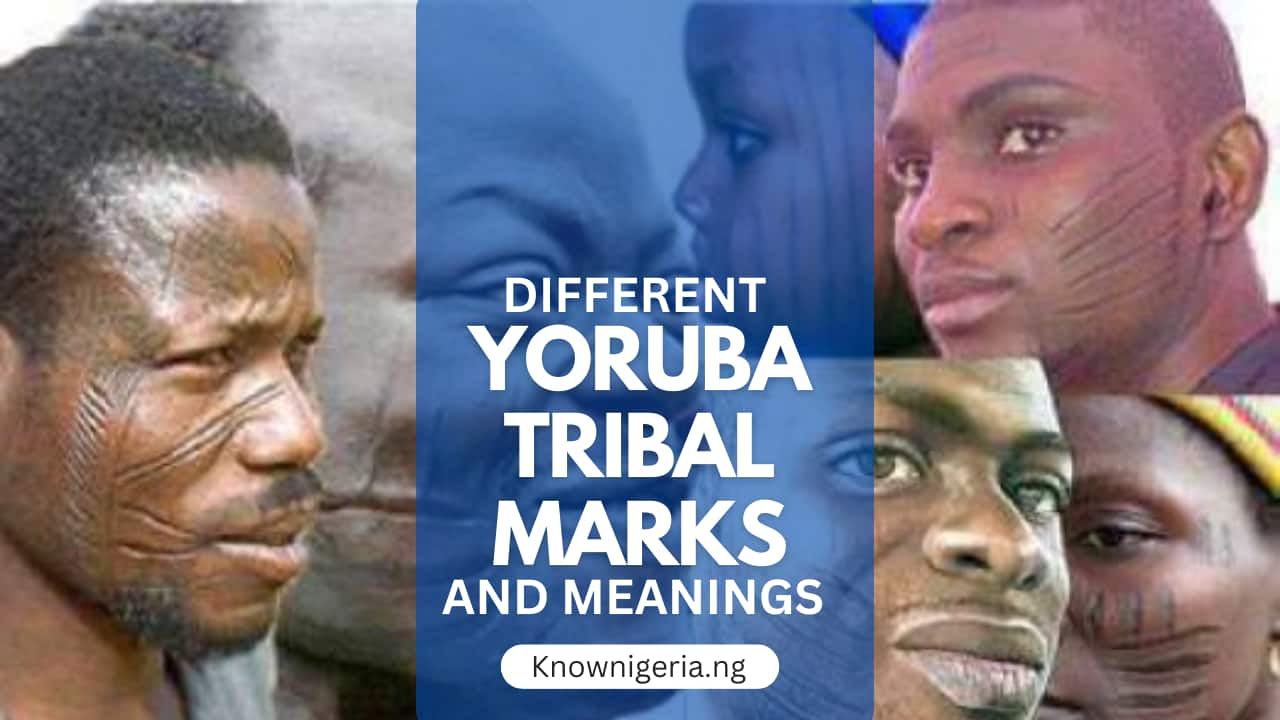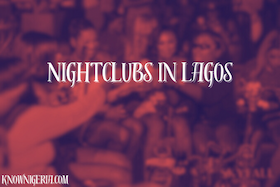The Yoruba tribe, one of the largest ethnic groupings in West Africa, is recognized for its illustrious culture and past.
Tribal marking, a traditional type of body art that involves skin scarification, is one of the most distinctive features of Yoruba culture. These numerous and varied tribal markings are unique to each family and each region. Yoruba tribal marks have been a vital component of their cultural legacy for ages and are ingrained in their identity and culture.
These symbols play a significant role in Yoruba identity and have deep cultural importance. Every child is born into a patrilineal clan known as “idile baba” in traditional Yoruba civilizations. Clan members share facial markings (ila), poetry (oriki), taboos (eewo), and clan names (orile).
The child has full clan membership rights due to the facial markings. The kids with the marks on their faces are called ‘Okola’ whereas those without these tribal marks are called ‘oboro’ meaning ‘plain, not striped face’.
Yoruba tribal markings date back to the earliest periods of Yoruba civilization. These symbols are thought to have first been used to identify family members and other groups, signifying their social standing and ancestry.
Tribal marking became a ritual of initiation for young adults over time, signifying their passage into maturity and integration into the community.
During the slave trade, tribal marks were used as a means of identification since some slaves who managed to escape might be recognized by the marks on their faces. Another traditional practice for beautifying is the use of tribal markings. The marks were worn with pride and served as a symbol of beauty, heritage, and honor.
This article will examine the various Yoruba tribe markings, their meanings, and explanations for their use.

Table of Contents
Yoruba Tribal Marks
Yoruba tribal marks are a series of scars or cuts made on a person’s face when they are still very young.
Tribal marks have unique characteristics. Three fundamental patterns exist; a single vertical stripe, three horizontal or vertical stripes, and four horizontal stripes. By combining the single-stripe, three-stripe, or four-stripe fundamental patterns, one can create other designs like the six- and seven-stripe patterns. Double stripes are notably unattested.
On each cheek, there is a symmetrical representation of facial stripes in general. However, when royal or wealthy families intermarry, asymmetrical patterns appear. Children born in these circumstances are given asymmetrical stripes that represent the position and affiliation of their parents.
Each of these tribal marks’ distinctive designs and patterns reflects the mark’s particular cultural and personal importance. The marks are typically made by making cuts or incisions on the skin, which are then allowed to heal and scar. They are usually found on the face, arms, and legs.
Yoruba tribal markings have meaning that extends beyond simple identification. The Yoruba people’s culture and traditions have a strong emphasis on tribal marks, which represent their ties to their lineage and community. Each mark has a distinct meaning and stands for several facets of the wearer’s identity, such as social standing, religious convictions, and individual accomplishments.
Every firstborn in Oyo State receives a tribal mark, regardless of gender, to signify that the baby is a genuine birthright and a legitimate child.
typical Yoruba tribal marks
The following are some typical Yoruba tribal marks:
1. Abaja
The abaja is one of the most popular Yoruba tribal marks. There are several horizontal lines that cross both cheeks to form this tribal mark. The majority of the time, children are born into the noble households of the Yoruba people. It is prominent among the Ijebu sub-ethnic group.

2. Pele
Located directly below the eyes, the pele tribal mark consists of three vertical lines. The Ille Ife and other Yoruba people frequently mark their children with this mark, which is typically given to babies from middle-class or lower-class families.

3. Gombo
Three parallel lines that are shaved over the forehead or cheek make up the Gombo tribal mark. The children of Yoruba royal families are typically marked with this mark. This style, sometimes referred to as “Keke,” is unique to the people of Ogbomosho in the Oyo state.

4. Kojusoko
Combining the pele and abaja marks, the kojusoko tribal mark is distinctive. This blemish features two horizontal lines across each cheek and three vertical lines directly below the eyes. Children born into a noble family receive this mark.
5. Owu
Three vertical lines that are slashed along the center of the forehead make up the Owu tribal mark. Children that are born into powerful and influential households receive this designation.

6. Gòmì
This Yoruba tribal mark, which consists of three vertical lines engraved on each cheek, is the most prevalent kind. It belongs to the Oyo and Egba sub-ethnic groups.

7. Kẹwẹ
This mark is etched on the forehead and consists of three horizontal lines. It is popular among the Ondo and Ekiti sub-ethnic groups.
Why Do the Yorubas Have Tribal Marks?
The Yoruba people consider tribal markings to be a significant part of their cultural history. Tribal marks are used to define an individual’s racial or ethnic origin, social class, and family. They are also thought to serve as a type of defense against evil spirits.
As a crucial component of Yoruba identity, tribal marks are profoundly ingrained in their cultural customs. They are thought to be an indicator of someone’s personality, social standing, and character. They stand for strength, beauty, and bravery.
Tribal marks are thought to have entered Yoruba culture more than 2,000 years ago. Tribal marks were then used to identify and separate people of various ethnic groups from one another.
Tribal markings were eventually linked to social position and used to distinguish between Yoruba society’s many social strata.
Tribal marks were thought to have mystical significance in addition to being utilized for social identification. Tribal marks were said to have the ability to ward off evil spirits, aid in healing, and enhance general well-being.
Some Yoruba people also think that those with tremendous potential could be recognized by their tribal markings. According to legend, some of the great Yoruba kings, like King Shango and Queen Moremi, possessed tribal markings that predicted their grandeur in the future.
Check out some tribal braids in Nigeria
Cultural Significance and Preservation of Yoruba Tribal Marks
Certain tribal marks in the Yoruba land have connections to the thrones of particular towns, therefore the new king is required to bear the tribal mark linked to this traditional office. For instance, any new monarch in Iseyin, Oyo State, is still obliged to bear the Pele tribal mark.
Yoruba tribal marking is a practice that has drawn criticism and controversy, with some seeing it as a kind of body mutilation. However, these marks serve as a source of pride and cultural legacy for the Yoruba people, signifying their ties to their past and sense of self.
Yoruba tribal marks have been actively promoted and preserved in recent years as an essential component of their cultural legacy. Cultural celebrations and ceremonies have been performed to honor and highlight the beauty of tribal marking, and numerous organizations and communities have been established to preserve the tradition from extinction.
Yoruba tribal marking, however, is increasingly disappearing because of the preference of many younger generations for more contemporary means of identification.
In response, efforts are being made to create awareness and educate the younger generation on the significance and cultural value of tribal marking.
Looking for the best markets in Nigeria? Read up on famous best markets in Nigeria
Conclusion
A distinctive and significant feature of Yoruba culture and identity, tribal marks serve to symbolize the people’s ties to their ancestors, neighbors, and traditions. They are profoundly ingrained in Yoruba cultural traditions and beliefs and differ from family to family and area to region. Tribal marks from the Yoruba people offer a visible link to the past and a peek into their rich cultural history.
Yoruba tribal marks continue to be a significant part of Yoruba’s cultural legacy, although not as ubiquitous as they once were. It is crucial that these cultural practices are preserved and perpetuated for future generations to enjoy and celebrate as Yoruba culture continues to develop and change.
If you like the content we bring to you, we know you would love the awesome contents we put out on our Youtube channel, Tiktok, Facebook, Instagram, and Twitter. Please subscribe and follow us for more Premium Know Nigeria content.










